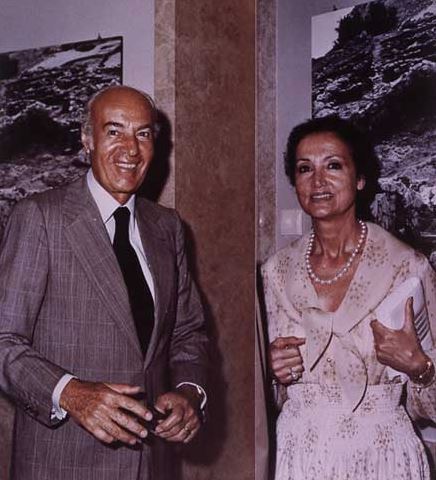Law & Politics
More Detail About Goulandris Collection and Questionable Offshore Dealings Revealed
A $3 billion art collection is at the heart of the case.

A $3 billion art collection is at the heart of the case.

Eileen Kinsella

The Wall Street Journal‘s Kelly Crow has revisited the ongoing, convoluted international legal battle over one of the most valuable private art collections ever assembled, that of the Greek shipping mogul Basil Goulandris and his wife, Elise.
Though not providing any new bombshells since the early April leak of the Panama Papers, which exposed activity including offshore account ownership and several questionable sales, “The $3 Billion Family Art Feud,” is certainly the most expansive account to date, bolstered by detailed information from the Goulandris’s niece, Aspasia Zaimis, who is fighting for ownership rights to several dozen important works.
The collection, which included masterpieces by Pablo Picasso, Vincent van Gogh, Paul Cézanne, Edgar Degas, and Claude Monet, is “now at the center of one of the biggest and most complex legal disputes over art in Europe… The saga involves a collection of treasures that have largely been hidden for the past two decades, a secret seller using an offshore company to put up paintings for auction, and a fight that boils down to one nonexistent well and one cryptic one,” according to the WSJ summary.
The couple, who had seven homes in spots including Paris, New York, Southampton, and Gstaad, “lived in a manner worthy of a sun-soaked Patricia Highsmith novel… and flitted around with European aristocracy,” according to the WSJ report. They had no children. Basil died in 1994 with no will, and his widow, Elise, passed away in 2000, leaving a less-than-detailed will.
Elise’s niece, Zaimis, says her aunt intended for the treasure trove of paintings to go to Zaimis and her relatives. But a longtime Goulandris employee, Kyriakos Koutsomallis, who manages the art collection of the Basil and Elise Goulandris Foundation in Athens, says the foundation has the rights to many of the artworks.
The foundation is creating a 12-story museum in a neoclassical mansion in Athens that is expected to display works from the Goulandris collection when it opens in early 2017.
Koutsomallis, along with relatives on Basil’s side of the family, asserts that 83 artworks—which reportedly constitute the most valuable pieces of the collection—were sold to an offshore company in 1985, nine years before Basil died. The works were purportedly later redirected back to the foundation, and would therefore not be part of Elise’s estate.
The billion dollar question of where the works are physically located remains a mystery since no one will say, according to the story.
One aspect of the report which appears to be fresh is the involvement of New York art dealer Ezra Chowaiki, who has helped finance Zaimis’s legal efforts in exchange for the rights to sell any paintings should her attempts to recover them prove successful. The report says he helped fund a case in Greece in 2001 that was later moved to Switzerland and then Lichtenstein.
Chowaiki is quoted as stating: “Would I have done this had I known what all it would become? Who knows, but I’ve spent millions at this point, so I’m all in.”
Elise Goulandris’s will, which was drawn up after her husband died, “contained no detailed inventory of the art collection and didn’t acknowledge the disputed sale of of the 83 masterpieces.” Her will also excluded everyone on Basil’s side of the family.
Zaimis believes the 1985 sale is a fabricated story that supports Basil’s relatives and the foundation’s claims to the work and thinks they “absconded with the art after her aunt died.”
As the report appropriately points out: “Certain facts seem to support Ms. Zaimis’ version of events.” As reported previously, the paintings remained in his possession for the remainder of his life, were frequently loaned to museums, and listed in exhibition catalogues and catalogue raisonnes as the Goulandris’s property. A paper expert said the type of paper on which the sale— for a comparatively low $31.7 million—was printed was not manufactured until three years after Basil Goulandris purportedly signed it.